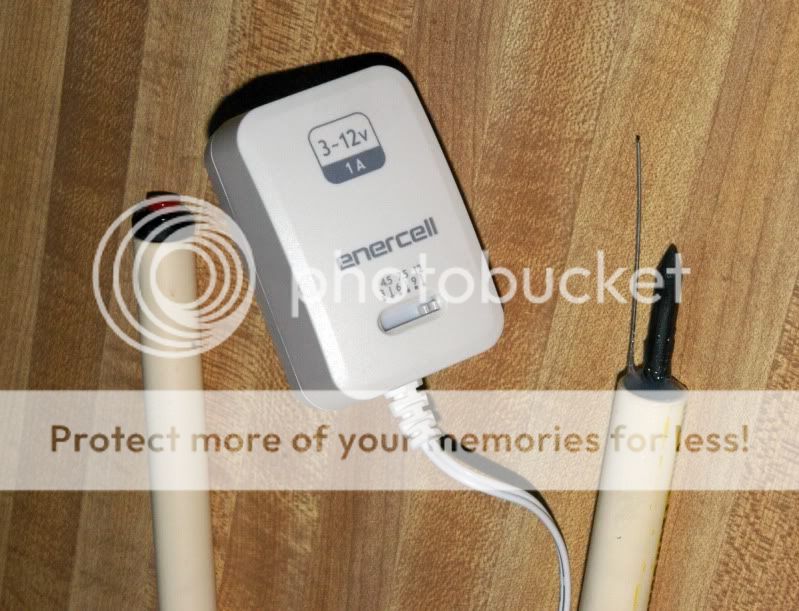neuroslicer
Old School Reefer


I've made a DC current probe similar to the Majano Wand developed by Paul Baldassano (www.majanowand.com). It consists of a 12V 1 amp DC current source from Radio Shack. While you're there pick up a push button switch as well. It creates a small DC electric field between the anode and cathode, and since it's DC current there's no danger of electrocuting anything outside of this small electric field (even with 1 amp of current!). When switched on, the negative lead (cathode) emits hydrogen gas as the positive ions accumulate there. Some people have speculated that it's the hydrogen gas that kills the Aiptasia, but I believe this to be false. Even at lower voltages that emit less gas there's still tissue damage. I'm convinced that the current itself is sufficient to cause the tissue damage.... cardiologists use this procedure every day to destroy hyperactive heart tissue that causes heart rhythm disorders... the process is called radio frequency ablation.
Anyway, more on the construction: I first tried using stainless steel welding wire for both positive and negative leads... but the positive anode showed rapid corrosion (as positive iron atoms migrated toward the cathode.... you could see the water fouling quickly). So I got a graphite stick at The Art Supply Center on Union Ave. and used that as the anode instead. Graphite is an electrically conductive form of carbon that is much more stable than iron, so you won't see any contamination of the water with the graphite anode. Once you've got the leads soldered, stick them into a PVC tube and seal up both ends with silicone caulk.
Next, how effective is this little bugger... it has pros and cons. The pros are that if your Aiptasia is well exposed, then just prodding it with the cathode will quickly kill it (the tissue rapidly turns white and goopy!). Then just use a turkey baster to suck out the dead tissue. But many of the Aiptasia in my tank were able to quickly retract into a small crevice or under a rock where I couldn't chase them with the Aiptaser.
So I recommend a combination of the Aiptaser and good old fashioned kalkwasser paste (aka Mrs. Wages Pickling lime, aka calcium hydroxide... available at Kroger's). I've found KW paste to be just as effective as Joe's Juice or Aiptasia X. I'm not convinced of rumored added miracle ingredients of these commercial products (I've heard that they might contain chemical attractants to encourage the critter to eat the paste, or sponge spicules that do internal damage.... I don't buy snake oil or homeopathic remedies either!). As for claims that Aiptasia eat Joe's Juice, etc... that's bunk. What you see when you squirt this stuff on is a thigmotaxic response (response to touch) consisting of a rapid withdrawal. If you've squirt the paste onto the oral disc than it has the same appearance as if the animal were eating, but it's simply an escape response. Don't forget to turn off the water circulation for 15 - 30 minutes so you don't flush the paste off the critter.
So good luck with your war on Aiptasia or Majano anemones. My main advice is whatever you use to combat the critters, you've got to do regular and frequenct checks for reappearance of the Aiptasia. After your first treatment, I'd recommend checking the tank at least every other day for at least two weeks and re-treating when you see new critters (or ones you missed the first time). Then you can probably reduce the inspections to once a week. But don't let the tank go uninspected for more than a month. Best time to inspect? Late at night with a flashlight... the critters will be fully extended, and using the flashlight is an effective way to spot check the entire tank.
Here's a link to a video posted by someone else showing the phenomenon of Aiptasing!
http://www.youtube.com/watch?v=ZJVlJNv1d68
Best fishes!
Neuro
And no Marty, it ain't Voodoo. It's Science!
Last edited:
